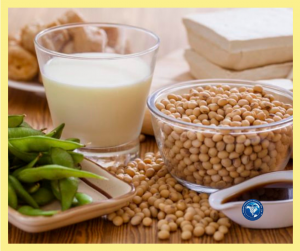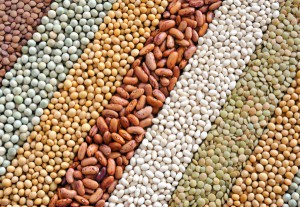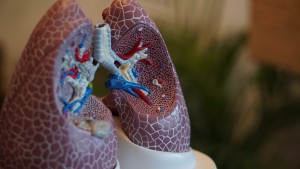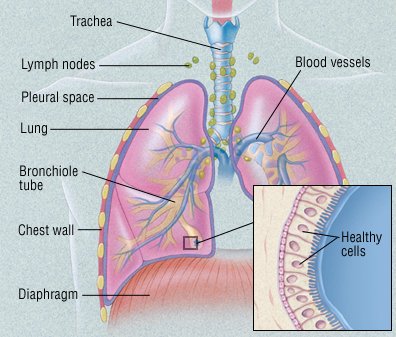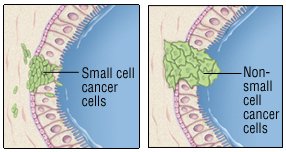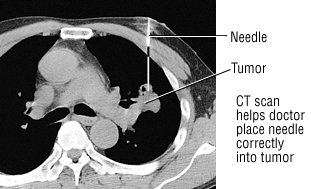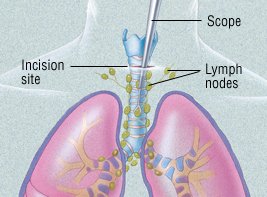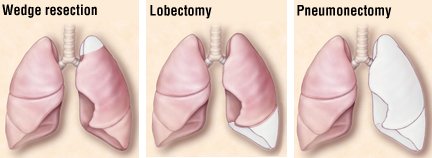In today’s fast-paced world, chronic stress is common, but your mind and body can pay a high price. Learn to recognize overwhelming stress—and what you can do about it.
What is stress?
Stress is your body’s way of responding to any kind of demand or threat. When you sense danger—whether it’s real or imagined—the body’s defenses kick into high gear in a rapid, automatic process known as the “fight-or-flight” reaction or the “stress response.”
When you feel threatened, your nervous system responds by releasing a flood of stress hormones, including adrenaline and cortisol, which rouse the body for emergency action. Your heart pounds faster, muscles tighten, blood pressure rises, breath quickens, and your senses become sharper. These physical changes increase your strength and stamina, speed up your reaction time, and enhance your focus—preparing you to either fight or flee from the danger at hand.
The stress response is the body’s way of protecting you. When working properly, it helps you stay focused, energetic, and alert. In emergency situations, stress can save your life—giving you extra strength to defend yourself, for example, or spurring you to slam on the brakes to avoid a car accident.
The effects of chronic stress
Your nervous system isn’t very good at distinguishing between emotional and physical threats. If you’re super stressed over an argument with a friend, a work deadline, or a mountain of bills, your body can react just as strongly as if you’re facing a true life-or-death situation. And the more your emergency stress system is activated, the easier it becomes to trigger, making it harder to shut off.
If you tend to get stressed out frequently, like many of us in today’s demanding world, your body may exist in a heightened state of stress most of the time. And that can lead to serious health problems. Chronic stress disrupts nearly every system in your body. It can suppress your immune system, upset your digestive and reproductive systems, increase the risk of heart attack and stroke, and speed up the aging process. It can even rewire the brain, leaving you more vulnerable to anxiety, depression, and other mental health problems.
Health problems caused or exacerbated by stress include:
- Depression and anxiety
- Pain of any kind
- Sleep problems
- Autoimmune diseases
- Digestive problems
- Skin conditions, such as eczema
- Heart disease
- Weight problems
- Reproductive issues
- Thinking and memory problems
Causes of stress
The situations and pressures that cause stress are known as stressors. We usually think of stressors as being negative, such as an exhausting work schedule or a rocky relationship. However, anything that puts high demands on you can be stressful. This includes positive events such as getting married, buying a house, going to college, or receiving a promotion.
Of course, not all stress is caused by external factors. Stress can also be internal or self-generated, when you worry excessively about something that may or may not happen, or have irrational, pessimistic thoughts about life.
Signs and symptoms of stress overload
The most dangerous thing about stress is how easily it can creep up on you. You get used to it. It starts to feel familiar, even normal. You don’t notice how much it’s affecting you, even as it takes a heavy toll. That’s why it’s important to be aware of the common warning signs and symptoms of stress overload.
Cognitive symptoms:
- Memory problems
- Inability to concentrate
- Poor judgment
- Seeing only the negative
- Anxious or racing thoughts
- Constant worrying
Emotional symptoms:
- Depression or general unhappiness
- Anxiety and agitation
- Moodiness, irritability, or anger
- Feeling overwhelmed
- Loneliness and isolation
Other mental or emotional health problems
Physical symptoms:
- Aches and pains
- Diarrhea or constipation
- Nausea, dizziness
- Chest pain, rapid heart rate
- Loss of sex drive
- Frequent colds or flu
Behavioral symptoms:
- Eating more or less
- Sleeping too much or too little
- Withdrawing from others
- Procrastinating or neglecting responsibilities
- Using alcohol, cigarettes, or drugs to relax
- Nervous habits (e.g. nail biting, pacing)
Common external causes of stress include:
- Major life changes
- Work or school
- Relationship difficulties
- Financial problems
- Being too busy
- Children and family
Common internal causes of stress include:
- Pessimism
- Inability to accept uncertainty
- Rigid thinking, lack of flexibility
- Negative self-talk
- Unrealistic expectations / perfectionism
- All-or-nothing attitude
What’s stressful for you?
Whatever event or situation is stressing you out, there are ways of coping with the problem and regaining your balance. Some of life’s most common sources of stress include:
- Stress at work
- Job loss and unemployment stress
- Caregiver stress
- Grief and loss etc..
How much stress is too much?
Because of the widespread damage stress can cause, it’s important to know your own limit. But just how much stress is “too much” differs from person to person. Some people seem to be able to roll with life’s punches, while others tend to crumble in the face of small obstacles or frustrations. Some people even thrive on the excitement of a high-stress lifestyle.
Factors that influence your stress tolerance level include:
Your support network. A strong network of supportive friends and family members is an enormous buffer against stress. When you have people you can count on, life’s pressures don’t seem as overwhelming. On the flip side, the lonelier and more isolated you are, the greater your risk of succumbing to stress.
Your sense of control. If you have confidence in yourself and your ability to influence events and persevere through challenges, it’s easier to take stress in stride. On the other hand, if you believe that you have little control over your life—that you’re at the mercy of your environment and circumstances—stress is more likely to knock you off course.
Your attitude and outlook. The way you look at life and its inevitable challenges makes a huge difference in your ability to handle stress. If you’re generally hopeful and optimistic, you’ll be less vulnerable. Stress-hardy people tend to embrace challenges, have a stronger sense of humor, believe in a higher purpose, and accept change as an inevitable part of life.
Your ability to deal with your emotions. If you don’t know how to calm and soothe yourself when you’re feeling sad, angry, or troubled, you’re more likely to become stressed and agitated. Having the ability to identify and deal appropriately with your emotions can increase your tolerance to stress and help you bounce back from adversity.
Your knowledge and preparation. The more you know about a stressful situation, including how long it will last and what to expect, the easier it is to cope. For example, if you go into surgery with a realistic picture of what to expect post-op, a painful recovery will be less stressful than if you were expecting to bounce back immediately.
Improving your ability to handle stress
Get moving. Upping your activity level is one tactic you can employ right now to help relieve stress and start to feel better. Regular exercise can lift your mood and serve as a distraction from worries, allowing you to break out of the cycle of negative thoughts that feed stress. Rhythmic exercises such as walking, running, swimming, and dancing are particularly effective, especially if you exercise mindfully (focusing your attention on the physical sensations you experience as you move).
Connect to others. The simple act of talking face-to-face with another human can trigger hormones that relieve stress when you’re feeling agitated or insecure. Even just a brief exchange of kind words or a friendly look from another human being can help calm and soothe your nervous system. So, spend time with people who improve your mood and don’t let your responsibilities keep you from having a social life. If you don’t have any close relationships, or your relationships are the source of your stress, make it a priority to build stronger and more satisfying connections.
Engage your senses. Another fast way to relieve stress is by engaging one or more of your senses—sight, sound, taste, smell, touch, or movement. The key is to find the sensory input that works for you. Does listening to an uplifting song make you feel calm? Or smelling ground coffee? Or maybe petting an animal works quickly to make you feel centered? Everyone responds to sensory input a little differently, so experiment to find what works best for you.
Learn to relax. You can’t completely eliminate stress from your life, but you can control how much it affects you. Relaxation techniques such as yoga, meditation, and deep breathing activate the body’s relaxation response, a state of restfulness that is the polar opposite of the stress response. When practiced regularly, these activities can reduce your everyday stress levels and boost feelings of joy and serenity. They also increase your ability to stay calm and collected under pressure.
Eat a healthy diet. The food you eat can improve or worsen your mood and affect your ability to cope with life’s stressors. Eating a diet full of processed and convenience food, refined carbohydrates, and sugary snacks can worsen symptoms of stress, while a diet rich in fresh fruit and vegetables, high-quality protein, and omega-3 fatty acids, can help you better cope with life’s ups and downs.
Get your rest. Feeling tired can increase stress by causing you to think irrationally. At the same time, chronic stress can disrupt your sleep. Whether you’re having trouble falling asleep or staying asleep at night, there are plenty of ways to improve your sleep so you feel less stressed and more productive and emotionally balanced.
Why is it so important to manage stress?
If you’re living with high levels of stress, you’re putting your entire well-being at risk. Stress wreaks havoc on your emotional equilibrium, as well as your physical health. It narrows your ability to think clearly, function effectively, and enjoy life. It may seem like there’s nothing you can do about stress. The bills won’t stop coming, there will never be more hours in the day, and your work and family responsibilities will always be demanding. But you have a lot more control than you might think.
Effective stress management helps you break the hold stress has on your life, so you can be happier, healthier, and more productive. The ultimate goal is a balanced life, with time for work, relationships, relaxation, and fun—and the resilience to hold up under pressure and meet challenges head on. But stress management is not one-size-fits-all. That’s why it’s important to experiment and find out what works best for you. The following stress management tips can help you do that.
Tip 1: Identify the sources of stress in your life
To identify your true sources of stress, look closely at your habits, attitude, and excuses:
Do you explain away stress as temporary (“I just have a million things going on right now”) even though you can’t remember the last time you took a breather?
Do you define stress as an integral part of your work or home life (“Things are always crazy around here”) or as a part of your personality (“I have a lot of nervous energy, that’s all”)?
Do you blame your stress on other people or outside events, or view it as entirely normal and unexceptional?
Until you accept responsibility for the role you play in creating or maintaining it, your stress level will remain outside your control.
Tip 2: Practice the 4 A’s of stress management
While stress is an automatic response from your nervous system, some stressors arise at predictable times: your commute to work, a meeting with your boss, or family gatherings, for example. When handling such predictable stressors, you can either change the situation or change your reaction. When deciding which option to choose in any given scenario, it’s helpful to think of the four A’s: avoid, alter, adapt, or accept.
Tip 3: Get moving
When you’re stressed, the last thing you probably feel like doing is getting up and exercising. But physical activity is a huge stress reliever—and you don’t have to be an athlete or spend hours in a gym to experience the benefits. Exercise releases endorphins that make you feel good, and it can also serve as a valuable distraction from your daily worries.
While you’ll get the most benefit from regularly exercising for 30 minutes or more, it’s okay to build up your fitness level gradually. Even very small activities can add up over the course of a day. The first step is to get yourself up and moving. Here are some easy ways to incorporate exercise into your daily schedule:
Put on some music and dance around
Take your dog for a walk
Walk or cycle to the grocery store
Use the stairs at home or work rather than an elevator
Park your car in the farthest spot in the lot and walk the rest of the way
Pair up with an exercise partner and encourage each other as you work out
Play ping-pong or an activity-based video game with your kids
Tip 4: Connect to others
here is nothing more calming than spending quality time with another human being who makes you feel safe and understood. In fact, face-to-face interaction triggers a cascade of hormones that counteracts the body’s defensive “fight-or-flight” response. It’s nature’s natural stress reliever (as an added bonus, it also helps stave off depression and anxiety). So make it a point to connect regularly—and in person—with family and friends.
Keep in mind that the people you talk to don’t have to be able to fix your stress. They simply need to be good listeners. And try not to let worries about looking weak or being a burden keep you from opening up. The people who care about you will be flattered by your trust. It will only strengthen your bond.
Of course, it’s not always realistic to have a pal close by to lean on when you feel overwhelmed by stress, but by building and maintaining a network of close friends you can improve your resiliency to life’s stressors.
Tip 5: Make time for fun and relaxation
Beyond a take-charge approach and a positive attitude, you can reduce stress in your life by carving out “me” time. Don’t get so caught up in the hustle and bustle of life that you forget to take care of your own needs. Nurturing yourself is a necessity, not a luxury. If you regularly make time for fun and relaxation, you’ll be in a better place to handle life’s stressors.
Tip 6: Manage your time better
Poor time management can cause a lot of stress. When you’re stretched too thin and running behind, it’s hard to stay calm and focused. Plus, you’ll be tempted to avoid or cut back on all the healthy things you should be doing to keep stress in check, like socializing and getting enough sleep. The good news: there are things you can do to achieve a healthier work-life balance.
Don’t over-commit yourself. Avoid scheduling things back-to-back or trying to fit too much into one day. All too often, we underestimate how long things will take.
Prioritize tasks. Make a list of tasks you have to do, and tackle them in order of importance. Do the high-priority items first. If you have something particularly unpleasant or stressful to do, get it over with early. The rest of your day will be more pleasant as a result
Tip 7: Maintain balance with a healthy lifestyle
In addition to regular exercise, there are other healthy lifestyle choices that can increase your resistance to stress.
Eat a healthy diet.
Reduce caffeine and sugar
Avoid alcohol, cigarettes, and drugs.
Get enough sleep
Tip 8: Learn to relieve stress in the moment
When you’re frazzled by your morning commute, stuck in a stressful meeting at work, or fried from another argument with your spouse, you need a way to manage your stress levels right now. That’s where quick stress relief comes in.
Quick Stress Relief
Learn how to use sensory stimulation to relieve stress on the spot and stay calm, productive, and focused—no matter what life throws at you.
What is the fastest way to relieve stress?
There are countless techniques for managing stress. Yoga, mindfulness meditation, and exercise are just a few examples of stress-relieving activities that work wonders. But in the heat of the moment, during a high-pressured job interview, for example, or a disagreement with your spouse, you can’t just excuse yourself to meditate or take a long walk. In these situations, you need something more immediate and accessible.
One of the speediest and most reliable ways to stamp out stress is to engage one or more of your senses—sight, sound, taste, smell, touch—or through movement. Since everyone is different, you’ll need to do some experimenting to discover which technique works best for you—but the payoff is huge. You can stay calm, productive, and focused when you know how to quickly relieve stress.







